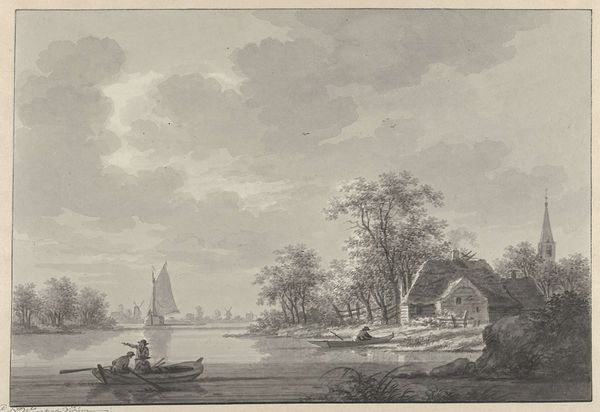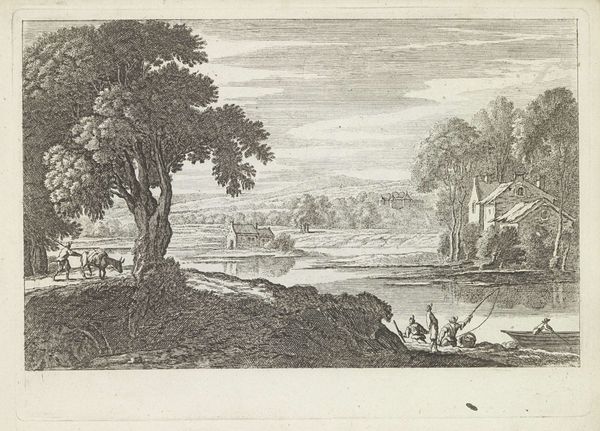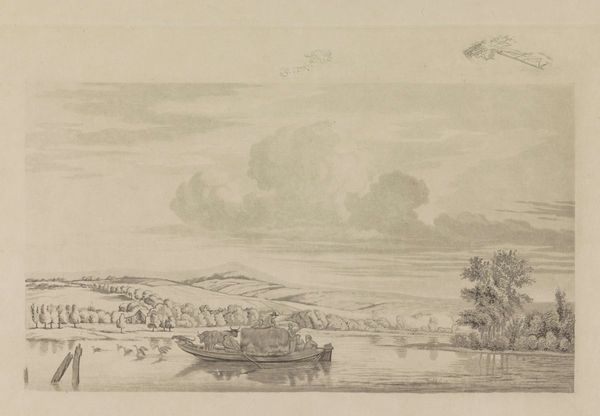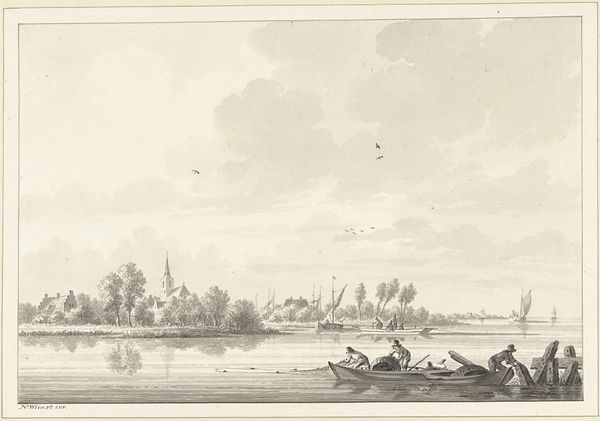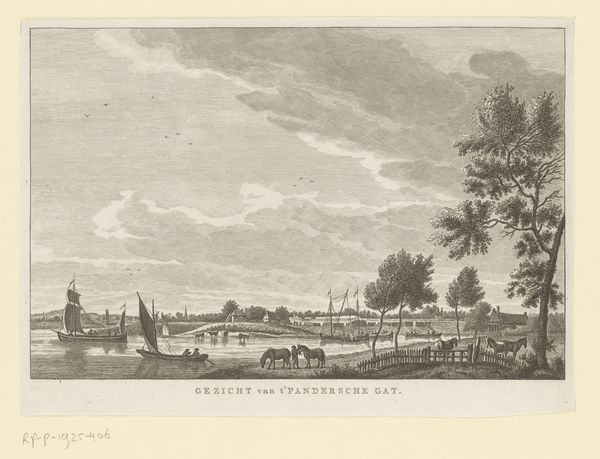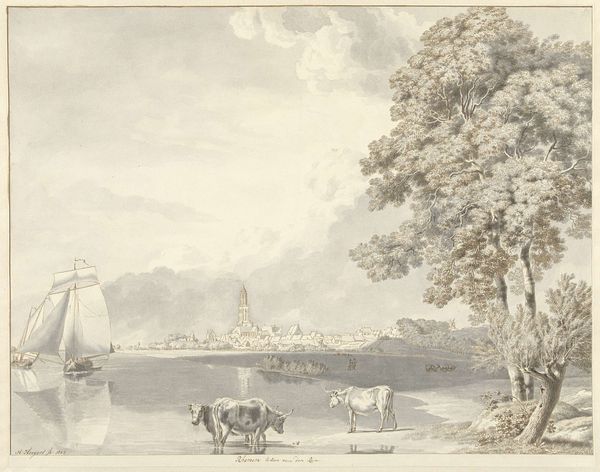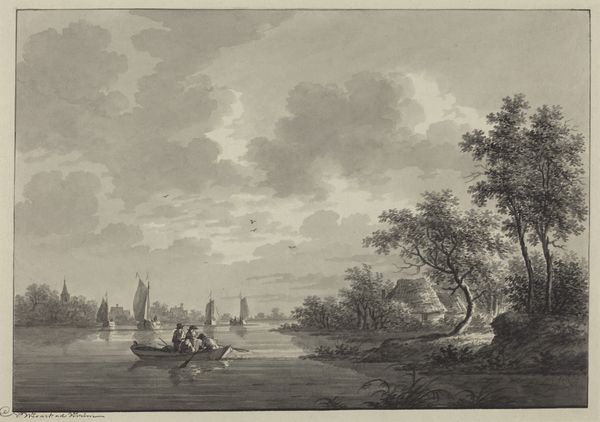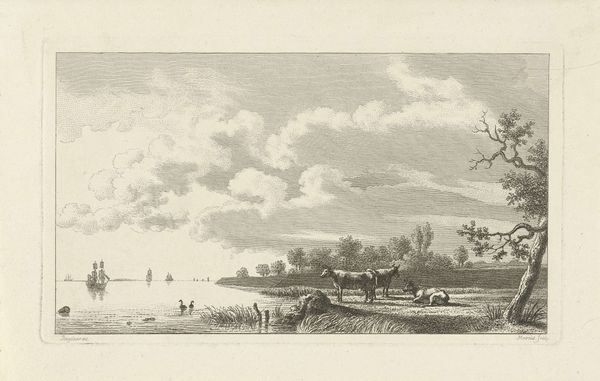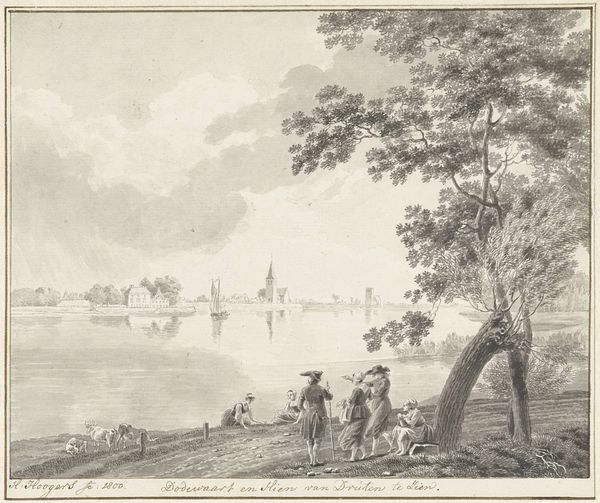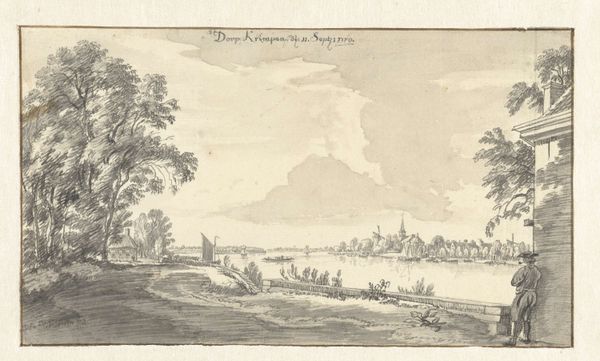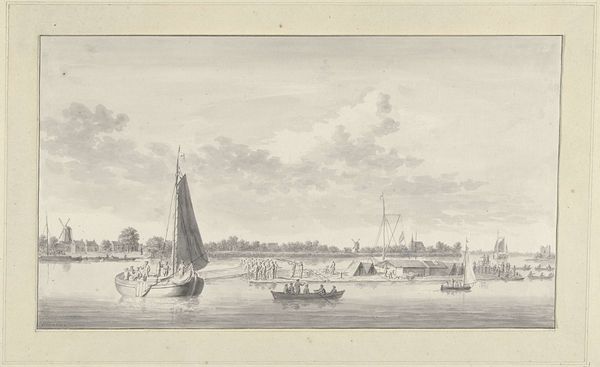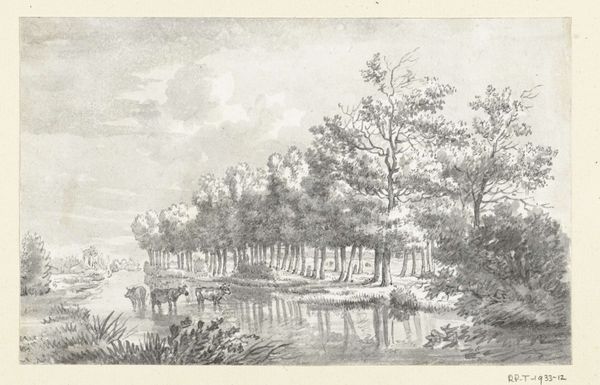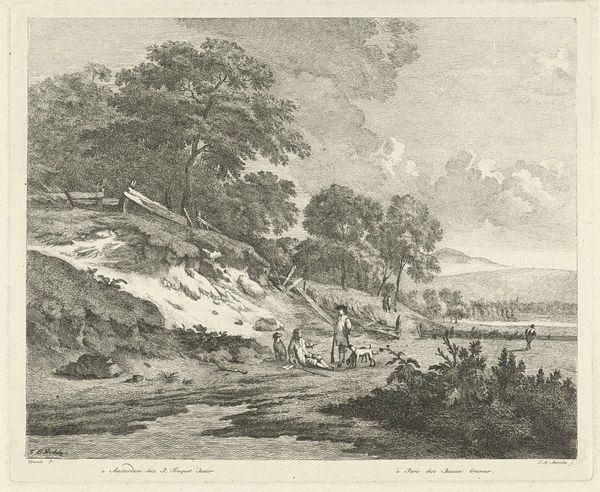
drawing, etching
drawing
neoclacissism
etching
landscape
etching
cityscape
Dimensions: height 225 mm, width 354 mm
Copyright: Rijks Museum: Open Domain
Curator: This tranquil etching from 1786 presents "Gezicht op Dresden," a cityscape attributed to Daniël Dupré. The technique alone feels significant, the way lines are rendered seems so calculated and considered. What do you make of it? Editor: Well, my immediate impression is of peace and quietude. The delicate lines create an almost dreamlike vision of Dresden. There’s a hazy softness to it all. Curator: Indeed. Dresden held great significance for the development and spread of Neoclassicism throughout Europe. Dupré’s approach offers insight into how cityscapes played a role in shaping and promoting classical ideals and principles to wider audiences. Editor: I agree. Those elegant spires in the distance definitely contribute to the idealized vision. Speaking of distance, look how small the figures are by the river. They appear almost incidental. Does that suggest a focus on the city itself as the primary subject, not its inhabitants? Curator: Precisely. Neoclassical art favored grand narratives and timeless themes. Everyday life held less importance than depicting historical events and mythological figures. That emphasis on objectivity often minimized the individual’s experience. However, there could also be the subtle undercurrent of the effects of war; etched after the Seven Years War which left Dresden damaged, though rising again in status, but these soft lines and peaceful depictions perhaps indicate the hope in such reconstruction? Editor: Perhaps, as that perspective ties back into this idea of memory and symbolism within the imagery. Those gentle curves, those carefully placed boats…it almost feels like a scene designed to evoke a sense of nostalgia and reflection. Like a remembered moment, softened by time. Curator: Certainly, landscape views of prominent urban centers catered to a growing market for cityscapes. The engravings themselves offered citizens and visitors a sense of civic pride and the reestablishment of their power following times of destruction, as well as the chance to possess miniature views of cherished locations. This brings the powerful and elite artworks to a broader audience and makes a comment on art and class in the period. Editor: So, more than just a pretty picture then. Curator: Absolutely. It's a document reflecting social values, cultural priorities, and emerging political ideas and economic empowerment during that time. Editor: Thank you, those perspectives are compelling! This visit with Dupré’s "Gezicht op Dresden" was unexpectedly evocative for me, it holds some hidden complexity.
Comments
No comments
Be the first to comment and join the conversation on the ultimate creative platform.
